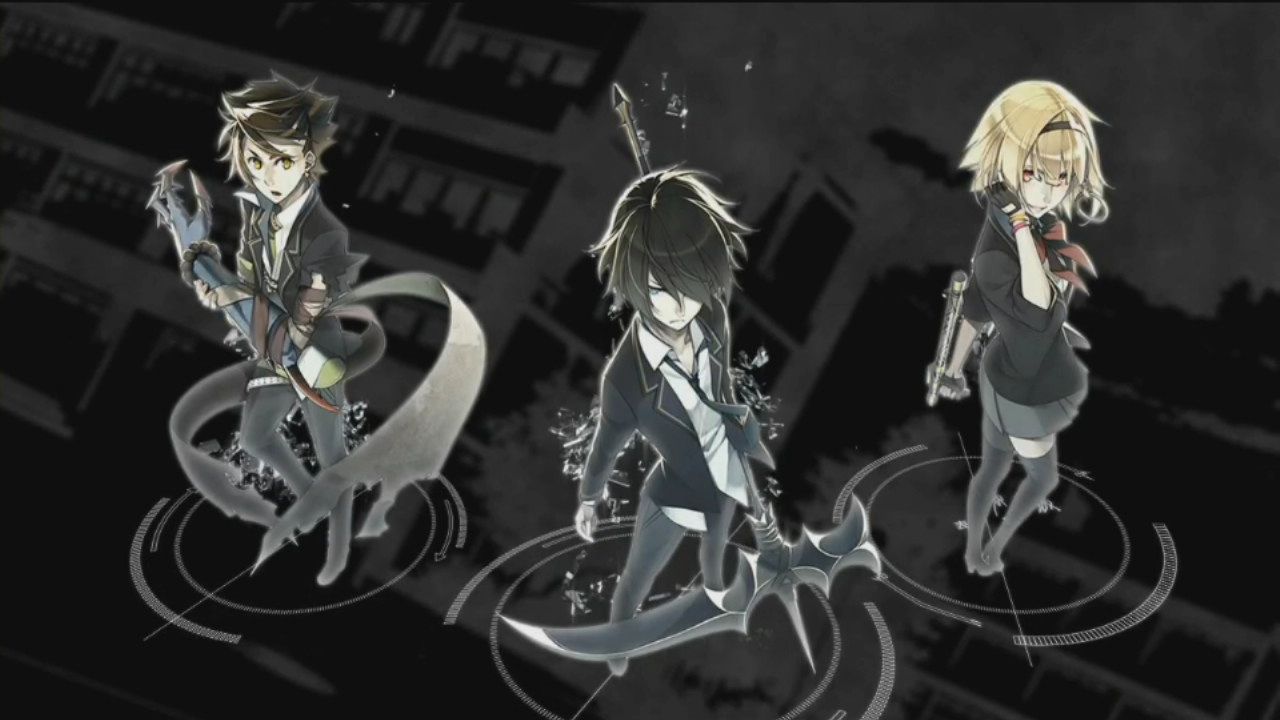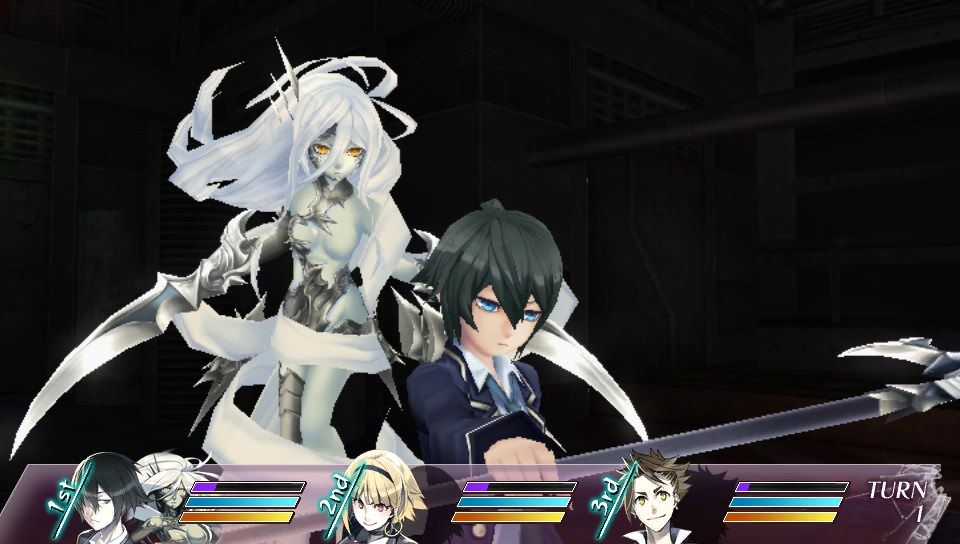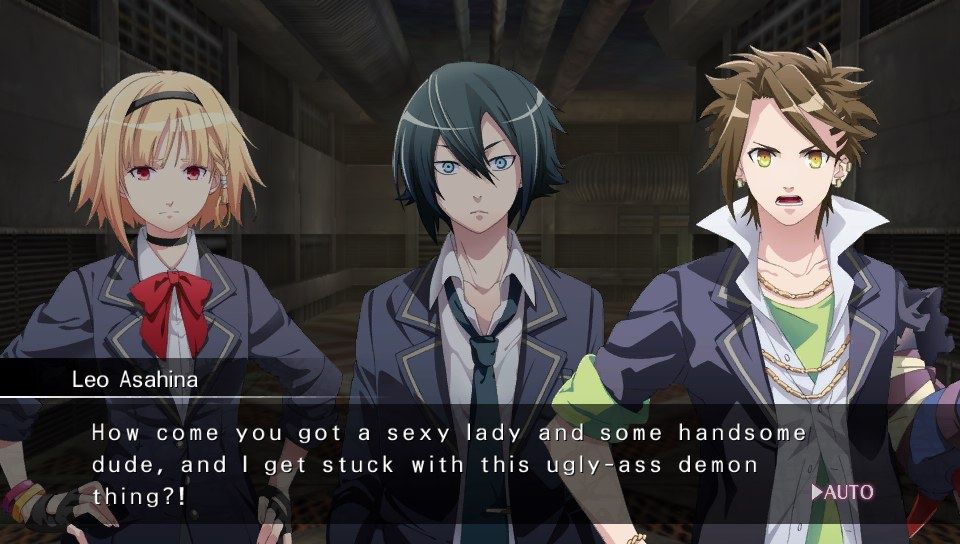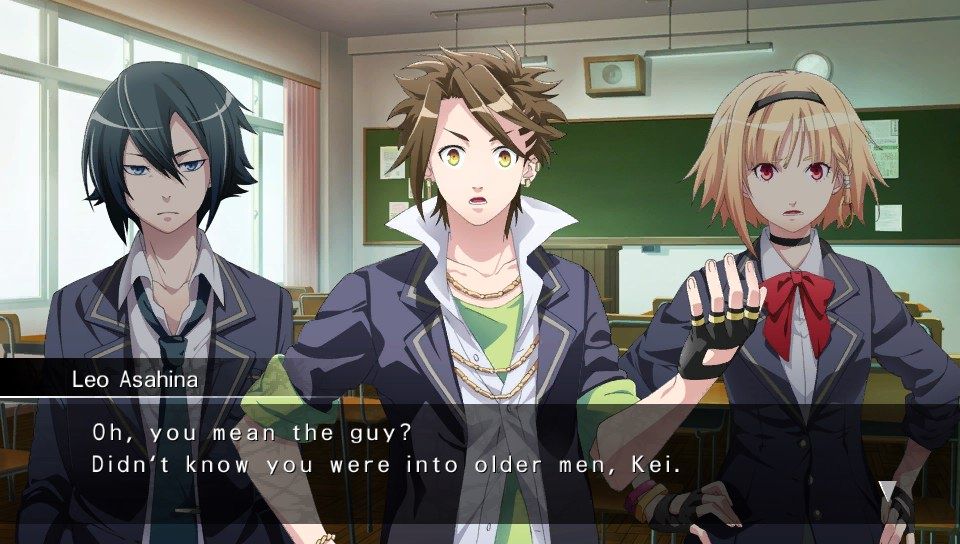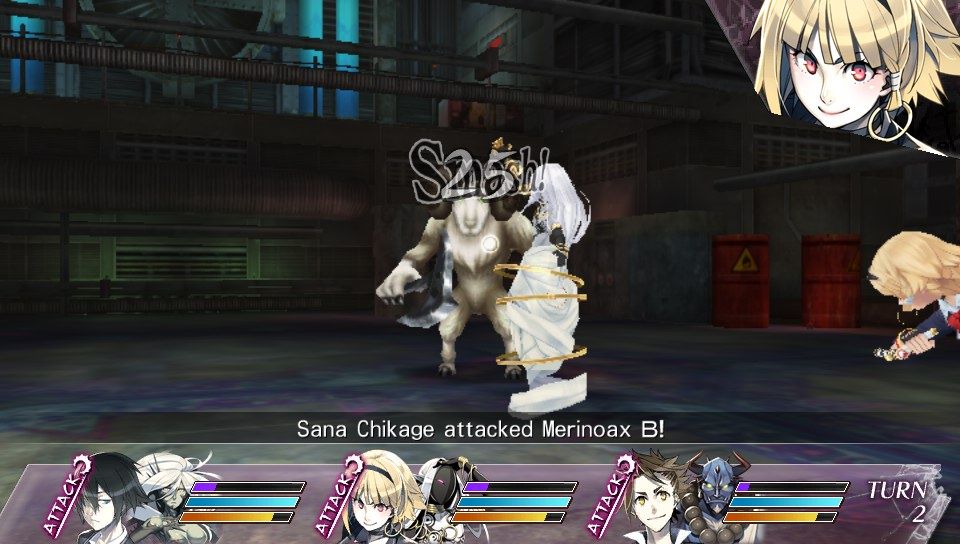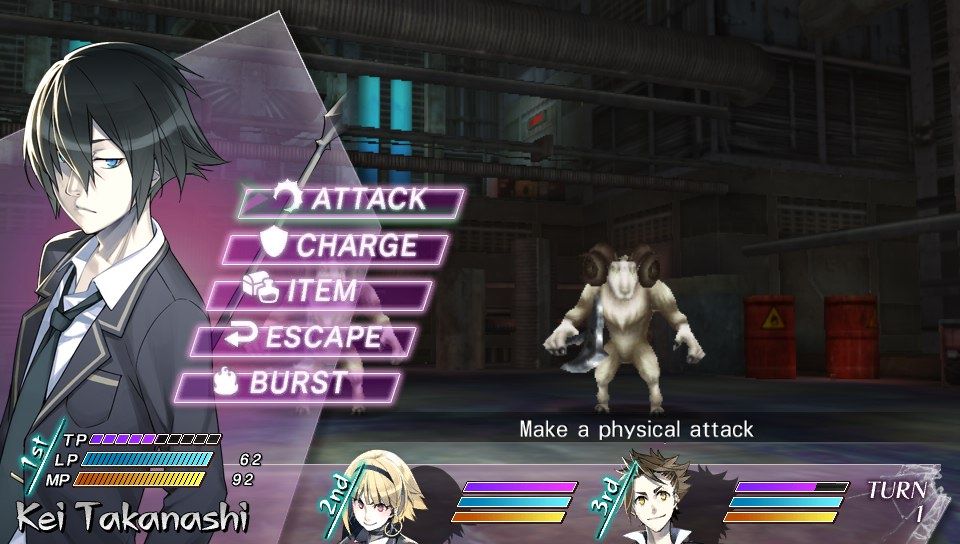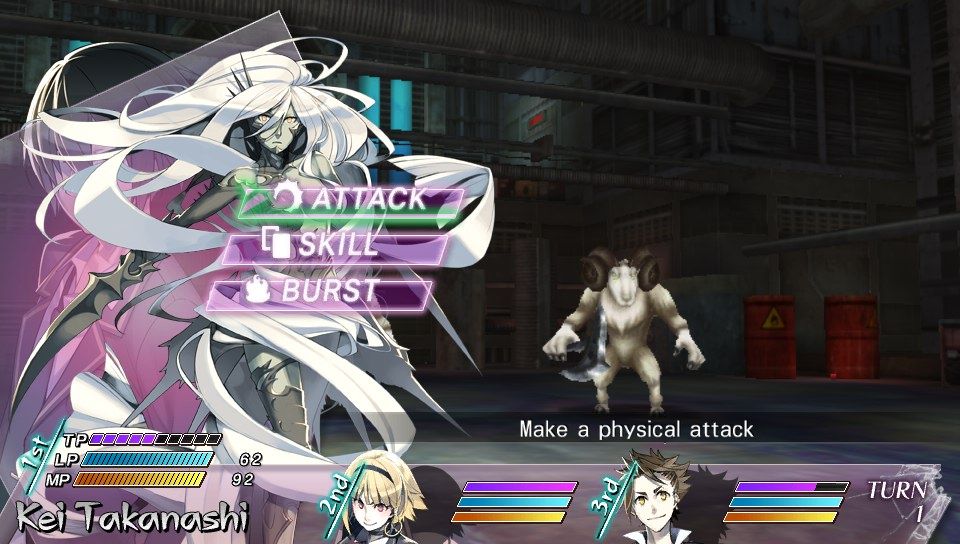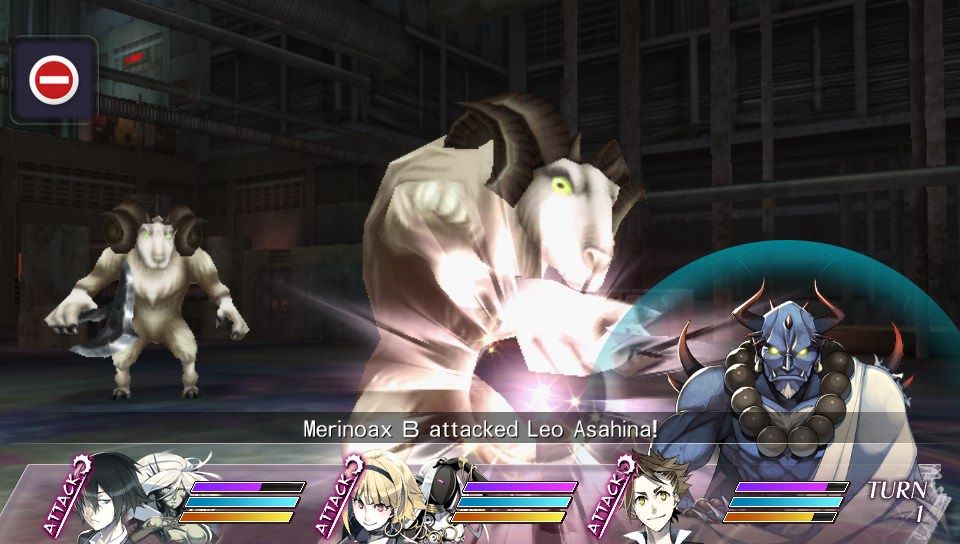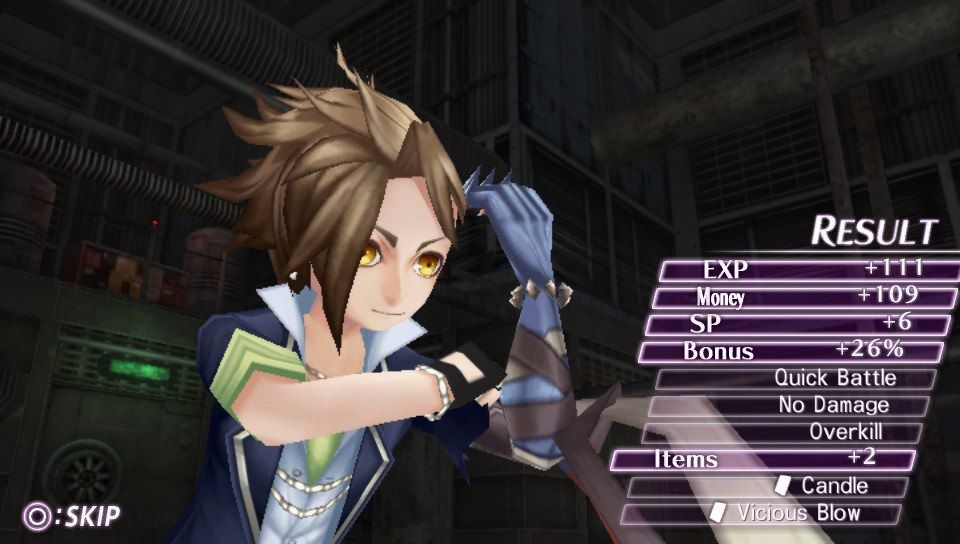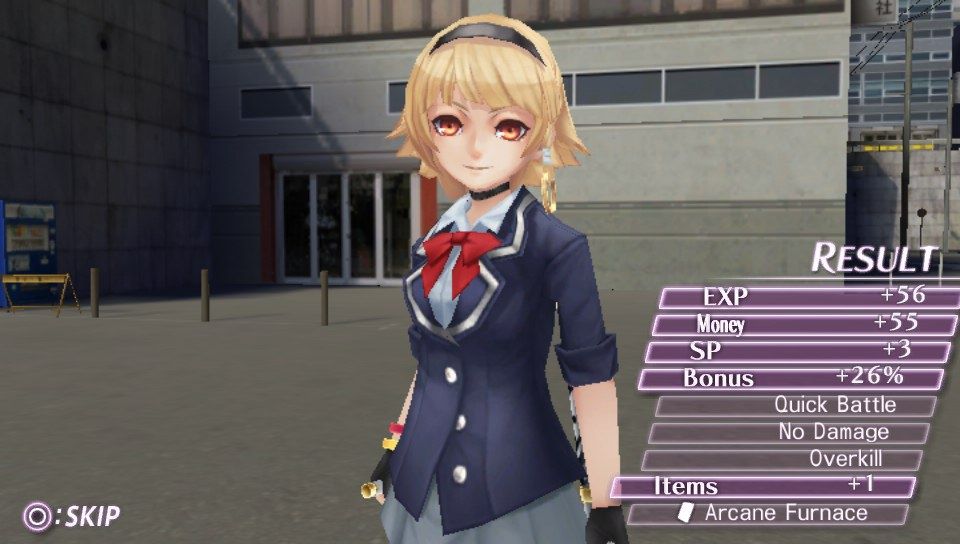If I had to summarize Mind Zero in one statement, I would say that it truly represents a low budget title. Before I hear the resounding "Duh, Allisa, just like all those other low budget titles you enjoyed," let me first delve into what constitutes this game a bit.
Mind Zero stars Kei Takanashi, a high school student (unsurprisingly). One day his friend Shizuku Kamina spots a young schoolboy with a terrible attitude and gives Kei an ominous premonition: that boy will die. Kei takes off and runs into classmate Sana fighting off a deranged and violent man.
Kei is soon sucked in some strange black portal and ends up in a strange shop run by a woman called the Undertaker. She instructs him to choose a weapon carefully which, unbeknownst to him, creates a contract with a MIND. A MIND is a sort of mirror image of a person and there are as many MINDs in existence as humans. They exist in another world and use violence as their main form of interaction -- they also eat humans. However, the worlds normally don't crossover, except when they possess or kidnap people.
Kei, Sana Chikage, Leo Asahina and a growing number of allies now must aid private investigator Ogata Yoichi in finding out more about their new abilities -- like how they could form contracts with these entities in the first place -- and the violent MINDs that manage to escape, all while avoiding the government and police trying to get to the bottom of this mystery themselves.
Sounds interesting in theory but in practice, the plot is actually rather lackluster. While finding out more about the weird happenings of the MIND attacks whets my curiosity appetite, the story doesn't exactly ooze intrigue and suspense, since this kind of plot isn't exactly ground-breaking. In fact, I would go so far as to say that the only reason I stayed emotional invested in the story at all is due to the unexpectedly interesting cast.
The character designs looked like classic (or cliche) personality archetypes and I went in fully expecting to find just that. Imagine my surprise to find, instead, fleshed out people who are incredibly fun to watch and, better yet, aren't (usually) raging stereotypes.
For instance, Sana is a physically active person who throws herself into any sport she can. And while Sana is a go-getter and loud, she's also unsure of herself and sensitive of how people view her. Kei looked like the poster child for emo but he's simply blunt and no-nonsense. What makes him interesting is that he's openly sensitive to others needs and very kind.
Then there's Leo, who seems like the everydude sidekick for the protagonist. However, he's perceptive, genuinely happy in everything he does and is very open-minded. Here's an example:
That dialogue may look like your typical "durr hurr you're gay" dudebro joke, but the key here is how the line is said. In both Japanese and English (yes you can switch between the two) he's sincerely surprised by this very wrong conclusion. I feel like if Kei hadn't nipped this in the bud right away, Leo's next scheme would have involved being the world's greatest wingman.
I could go on and on with these characters, but the point remains that I enjoyed the non-dungeon crawling segments the most, which is not a good thing. Let's awkwardly segway into that portion now.
Visually, dungeon-crawling and actual fights are like watching a VHS tape. The sound effects are bad (and Zero has ugly sound effects all-round but it especially shows in battle), the battle music is terrible and the overall sound quality is poor. The turn-based battle system itself isn't bad per se, just lacking in anything remotely compelling.
When a battle starts, you can either have the party member choose from one of the following commands:
And if you summon their MIND, the commands change to this:
Summoning MINDs in battle has the added effect of protecting that character from harm. Instead of their LP (Life Points) decreasing with each blow taken, their MP (Mind Points) decrease. Of course MP isn't limitless and if a character runs out, they will enter a state called MIND Break -- they can't summon their MIND for four turns and must wait until the next turn to act.
Figuring out when to dismiss your MIND and Charge (party member takes less damage and regains more MP each turn) and when to resummon is the key to victory. According to the tutorial at least. The problem is that dismissing your MIND, even while guarding, is pretty dangerous since now that party member is vulnerable to direct attacks.
The best course of action, especially against those pesky MIND resistant foes, is to build up TP (Tech Points) and use Burst Mode. This allows for extra attacks, which can be normal or MIND, in the same turn with the bonus of not losing that turn.
There's also an elemental system somewhere but it's pretty barebones and barely worth mentioning. MP is fully restored after every battle, which means there's no need to bother conserving or managing MP. Pretty boring if you ask me, especially for a dungeon crawler.
Another criticism I have concerns skills. The interface for assigning skill cards to party members is counter-intuitive, and the tutorial explains the feature poorly. Also, there's the little issue of being able to use only one skill for each character. You gain more skill slots by acquiring SP (Skill Points), which is something never explained in-game. The amount of SP needed to gain a new slot also seems to be a hidden value for some reason.
I already mentioned before that the artwork is beautiful but it bears mentioning again, since the art is one of the few things that belies the game's actual production value. However, the 3D models are another story. As you can see, they hold little resemblance to the 2D art. As you can also see, the 3D models are hideous. Music outside of battle is pretty decent, which leaves me wondering why more effort was put into this music and not the normal battle music players would be listening to repeatedly throughout the game.
It may seem like I'm trying to tell you that the only two redeeming qualities in Mind Zero are the characters and the art -- and that's exactly what I'm saying. Unfortunately, even those two points aren't enough because plenty other games have great characters and lovely artwork, as well as an interesting plot, good music, fun and engaging battle systems, etc.
Low budget is absolutely not synonymous with a middling or terrible game, just as throwing tons of money doesn't magically make it polished or good. Small money titles like Shin Megami Tensei IV, Persona 3 and 4, Fire Emblem Awakening, the Atelier series and even Conception II and Child of Light show that knowing your limits and focusing on creating a unique experience is how to make a small title stand out.
The problem is, Mind Zero doesn't do any of that; there's no sense of a unique identity or boundless creativity and charm to make this game stand out from a multitude of other similar titles. By this I mean: what part of Mind Zero is something done in a way that sets it apart? That takes what was put into it and creates a brand new entity? That is greater than the sum of its parts? Nothing, and therein lies the problem.

